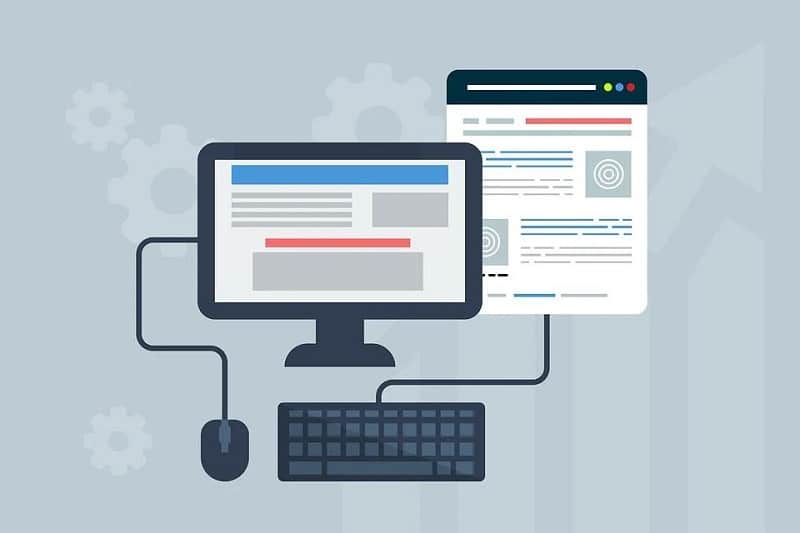
Believe it or not, understanding how to build a website from the ground up is one of the most important skills a small company owner should have in this day and age. But luckily, there's a solution for this. WordPress is a popular content management system that can be used for professional websites. It's easy to use and has many features that make it a good choice for businesses.
In order to create a WordPress website, however, you need to know a few key things. In this article, we'll discuss what makes WordPress a good choice for businesses and how you can create your own website.
Is WordPress Good for Professional Websites?
But first, let's answer the question: is WordPress good for professional websites? The answer is yes. WordPress is a popular content management system that has been used by businesses of all sizes for years. It's easy to use and has many features that make it a good choice for businesses. In fact, over 60% of the top 10 million websites in the world are built on WordPress.
However, if you don't think you're capable of doing that on your own, the smartest move would be to hire a WordPress website design company that can help you out. After all, your website is the face of your business and it pays to make sure it's done right.
How to Create a WordPress Website?
Now that we know that WordPress is a good choice for professional websites, let's move on. We already discussed hiring a website design company if you don't know how to do it by yourself.
If, on the other hand, you're still up for doing it yourself or if you just want to have a better understanding of how it works before hiring someone, then this section is for you. In order to create a WordPress website, you need to do understand a few key things:

Choose a Platform
When creating a new website, you may choose from a variety of website systems, which are commonly referred to as Content Management Systems (CMS). Fortunately, selecting the finest one is straightforward. There is only one king at the top of the mountain, and that is WordPress.
The following are the primary advantages of utilizing WordPress: It's open-source, free, extremely adaptable, quick, optimized, and safe, SEO-ready, and makes social media advertising easy. However, you also need to understand the difference between WordPress.org and WordPress.com.
You host your own website or blog on WordPress.org, through a third-party hosting provider, while WordPress.com offers to host your website for you.
Pick a Name for Your Website
Now that you've familiarized yourself with WordPress, it's time to choose a name for your website. This can be tricky because you want to make sure it's available and also represents your business in the best way possible.
It's a good idea to build your website's name (and hence your domain name) around either your organization's name (the obvious method) or a phrase linked with the niche you're in, but with some extra words for greater brand-ability. A good domain name should be brandable, easy to remember, short, easy to write, and difficult to mix up.
Buy a Domain and Hosting
The next thing you need to do is buy a domain name and hosting. This can be done through a variety of websites, but we recommend using either GoDaddy or Bluehost. They're both reliable and affordable providers that offer a wide variety of services.
Having a domain name and hosting is important because it gives you a place to store your website's files and makes your website publicly accessible on the internet.
Get Familiar With the WordPress UI
Now that you have all of the basics, it's time to get started. The first thing you need to do is install WordPress. This can be done by downloading it from WordPress.org and then uploading it to your hosting provider.
Once you have WordPress installed, you need to familiarize yourself with the UI (User Interface). The UI is the area where you'll be doing all of your website editing. It's important to understand the different areas of the UI so that you can start creating pages and adding content.
Pick a Theme
The next step is to choose a theme for your website. WordPress has a wide variety of free themes available, but you may also want to consider purchasing a premium theme.
A good theme will give your website a professional look and help it stand out from the competition. It's important to choose a theme that's well-coded and optimized for SEO.
Install Plugins
The final step is to install plugins. WordPress plugins are add-ons that allow you to add features and functionality to your website. There are a wide variety of plugins available, and most of them are free. It's important to choose plugins that are well-coded, updated, and compatible with your theme.
Create Pages
Finally, it's time to start creating the actual pages for your website. WordPress makes this easy by allowing you to create new pages from within the UI. You can add text, images, and videos, as well as embed social media feeds and other widgets. Be sure to use keywords in your page titles and descriptions to help with SEO.
Whatever your niche is, it's important to create a website that is both professional and well-optimized. WordPress makes this easy, and with a little bit of effort, you can have a website that stands out from the competition. Don't forget that you'll need to add the page to your menu and add some content to make it look good.
So, is WordPress good for professional websites? The answer is yes! Now that you understand the basics of creating a WordPress website, it's time to get started. Remember, the most important thing is to take your time and familiarize yourself with the different areas of the UI.
Once you start getting comfortable with WordPress, you'll be able to create a website that meets your needs and exceeds your expectations. Hopefully, this article has helped you get started on your journey to creating a professional website.










